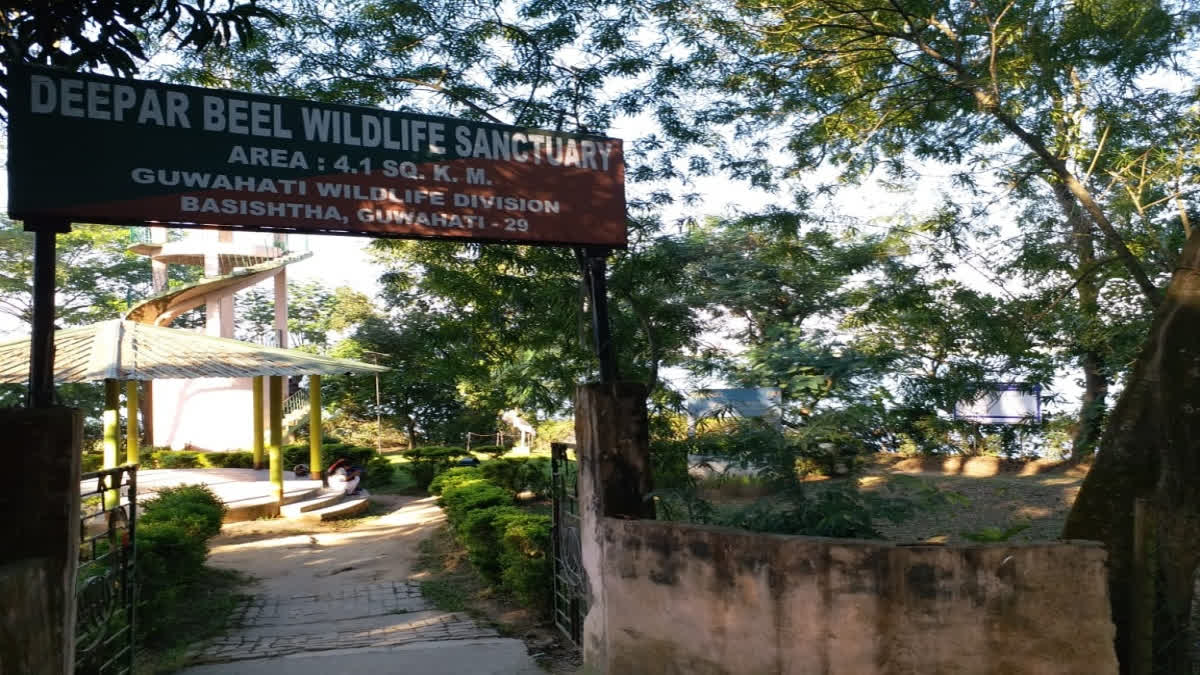Guwahati: Assam’s only Ramsar site, Deepor Beel, is in the eye of a storm following the state government’s decision to set up dedicated pedestrian and cycling tracks along its edges. While the plan aims to enhance eco-tourism, locals and conservationists argue that it could endanger the wetland’s biodiversity and disrupt livelihoods.
Taking to X on January 19, Assam Chief Minister Himanta Biswa Sarma had announced, "Soon the people of Guwahati will have a dedicated pedestrian and cycling zone nestled on the edges of the Deepor Beel which will provide a perfect relaxation spot whilst ensuring fitness for the people."
Located on the south west of Assam's capital town Guwahati, Deepor Beel was designated as a Ramsar site in 2002 and an Important Bird Area (IBA) by BirdLife International. The wetland serves as a habitat for 200 bird species, including migratory varieties, and acts as a natural reservoir during monsoons. The Beel directly or indirectly provides livelihood to the people in the 14 villages located nearby.
"We came to know that the government is planning to set up a cycling track and pedestrian zone here on the edges of the Deepor beel. We fear that creating a cycling track will lead to earth filling, which will harm the wetland’s biodiversity," said Promod Kalita, a local and Secretary of the Deepor Beel Suraksha Mancha.
Even though the government in in 2002 had announced to demarcate the boundary of the wetland, nothing has come off as yet, said Kalita.
To add to the woes, the Northeast Frontier Railway, the only railhead in the region, laid the railway tracks along the Deepor Beel in 2001 which fragmented the wetland into at least two subsystems and segregated the wetland-forest ecosystem.
Kalita's words reflect his emotion and attachment to the cause of conservation of the sanctuary area. He has seen degradation of the site over years which is still struggling pollution from a nearby waste dumping ground. "A municipal waste dumping site, established in 2009 despite protests, continues to pollute the wetland through runoff from a nearby canal. Additionally, railway tracks laid in 2001 fragmented the wetland, further straining its ecosystem," Kalita stated.
Despite strong opposition from the locals, the government turned a portion of the freshwater lake into a dumping ground of the Guwahati Municipal Corporation in 2009. The municipal waste amounting to about 600 tons per day polluted the water of the Beel affecting the ecology and environment. Despite protests, no action was taken to divert or channelise the waste to some other route. Currently, the dumping ground located near Pamohi canal, is also linked to the Deepor Beel.
The waste had contaminated the soil and the liquid continued to flow to the Beel affecting the wetland and its aquatic life.
"The steps to lay the cycling track on the edges of Deepor Beel have to be compliant with the biodiversity and ecology of the wetland. Deepor Beel is also an elephant corridor and any construction activity surrounding the wetland might negatively affect the elephant corridor," said Ornithologist, Anowaruddin Choudhury.
Local fishermen organizations whose livelihood depends on the Deepor Beel also reacted strongly to the proposed plan for the cycle tracks. "We have seen some people come to survey the beel a few days back. We were told that they were surveying the Beel for laying cycling tracks here. This will badly affect the ecology and biodiversity," said Golak Das, Secretary of the Deepor Beel Paspara Cooperative Society, a local organization of the fishermen community.
It is pertinent to mention here that Deepor Beel also acts as a natural stormwater reservoir during the monsoon for Guwahati city. The Basistha and Kalmani rivers and local monsoon run-off are the main sources of water to the lake, between May and September. Khonajan channel drains the Beel into the Brahmaputra river, 5 km to the north. The Beel has a perennial water spread on an area of about 10.1 km2, which extends up to 40.1 km2 during floods.
The wetland is also a breeding ground for at least 200 species of birds including over 70 varieties of migratory birds. While the wetland invited thousands of birds every year, the winged visitors have reduced in the last few years. The bird watchers recorded over 28,000 birds in the Deepor Beel in 2022, but the number came down to just 11,000 in 2023.
Read More



